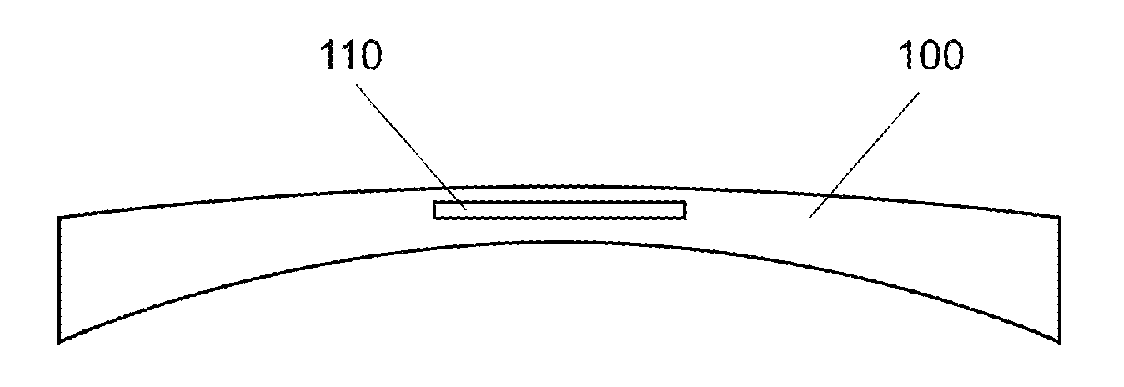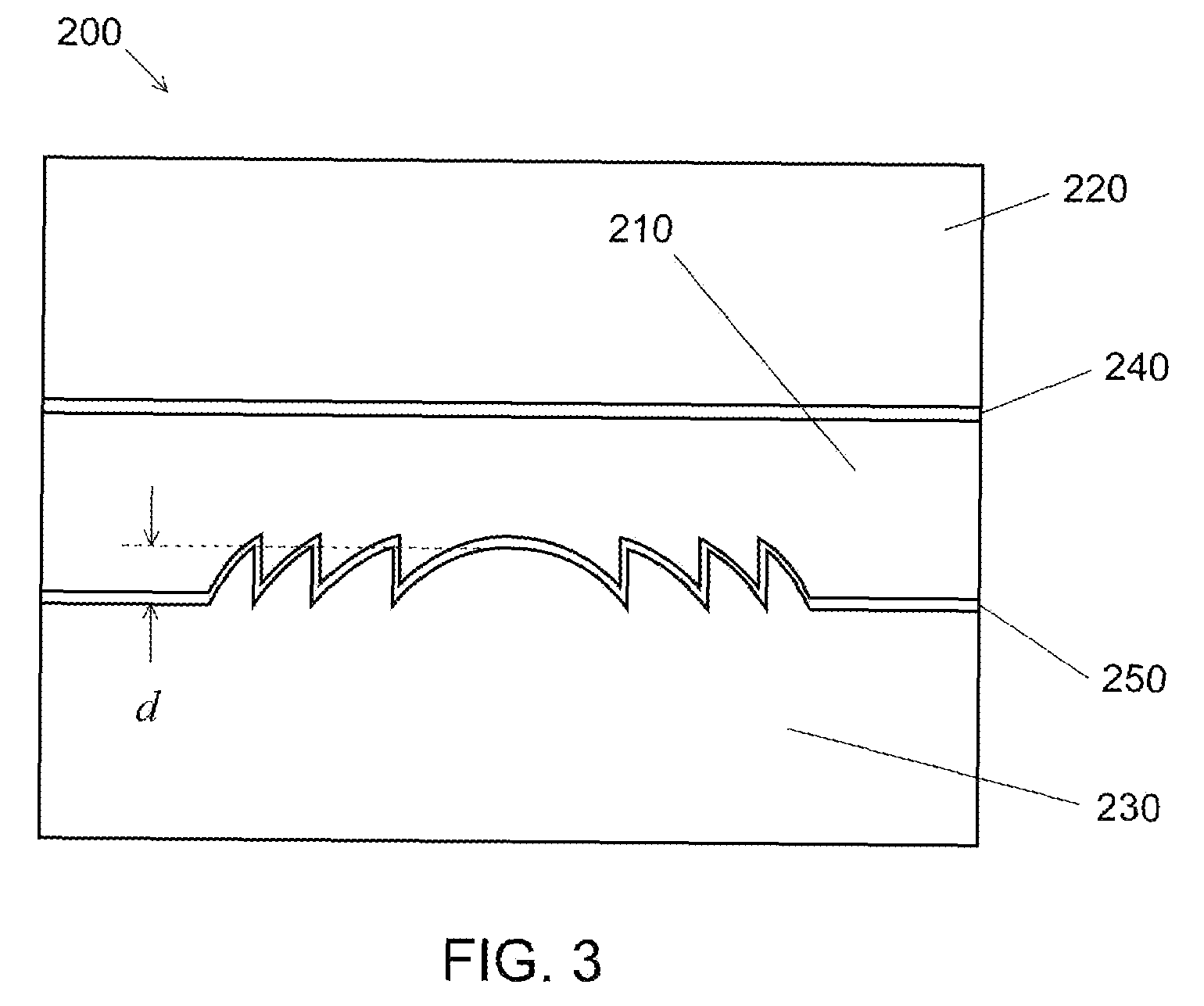Electro-active lens
a technology of electroactive lenses and liquid crystals, applied in the direction of spectacles/goggles, spectacles/goggles, instruments, etc., can solve the problems of non-conventional errors of the eye, higher order aberrations, and inability to focus on near-distance objects
- Summary
- Abstract
- Description
- Claims
- Application Information
AI Technical Summary
Benefits of technology
Problems solved by technology
Method used
Image
Examples
Embodiment Construction
[0035]In an embodiment of the present invention, a liquid crystalline material is polarization insensitive and has a low operating voltage requirement. In an embodiment of the present invention, the inventive liquid crystalline material may be included in an electro-active element. The inventive electro-active element may be fail-safe and may require only two electrical connections for operability. In an embodiment of the present invention, the inventive electro-active element may be included in a static electro-active lens. The static electro-active lens may at least partially correct for refractive errors of the eye such as myopia, hyperopia, astigmatism, presbyopia, and higher-order aberrations. The electro-active element may at least partially correct for any or all of the aforementioned refractive errors.
[0036]The inventive liquid crystalline material is a type of cholesteric liquid crystal. Cholesteric liquid crystalline materials, like nematic liquid crystals, are optically u...
PUM
| Property | Measurement | Unit |
|---|---|---|
| operating voltage | aaaaa | aaaaa |
| resistivities | aaaaa | aaaaa |
| thick | aaaaa | aaaaa |
Abstract
Description
Claims
Application Information
 Login to View More
Login to View More - R&D
- Intellectual Property
- Life Sciences
- Materials
- Tech Scout
- Unparalleled Data Quality
- Higher Quality Content
- 60% Fewer Hallucinations
Browse by: Latest US Patents, China's latest patents, Technical Efficacy Thesaurus, Application Domain, Technology Topic, Popular Technical Reports.
© 2025 PatSnap. All rights reserved.Legal|Privacy policy|Modern Slavery Act Transparency Statement|Sitemap|About US| Contact US: help@patsnap.com



